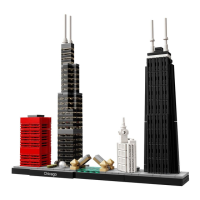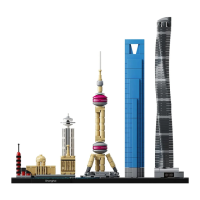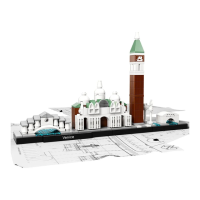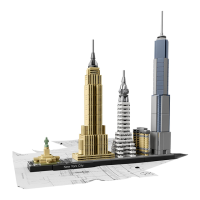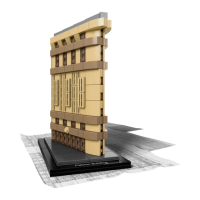2
Flatiron Building
Sitting on the intersection where Fifth Avenue and Broadway cross, the
Flatiron Building (originally named the Fuller Building) remains one of
New York City’s most popular and memorable structures. Today it is
difficult to imagine the controversy this architectural landmark created
on its completion in 1902.
[ I found myself agape, admiring a sky-scraper...
ploughing up through the traffic of Broadway
and Fifth Avenue in the afternoon light. ]
H. G. Wells, 1906
The Architect
Born in New York and raised in Chicago, Daniel H. Burnham would
become one of the founding fathers of the first Chicago School of
architects. Together with his then partner John W. Root, Burnham built
one of the first American skyscrapers, the 21-story Masonic Temple
Building in Chicago in 1892, and planned the architectural layout of the
largest World Fair ever held at that time in 1893.
Burnham’s architecture mixed elements of Modernism with a more
neoclassical style. Many of his buildings, including the Flatiron, followed
the convention of the classical column: three distinct parts made up of
a base, a middle section, and an ornate cornice at the top.
Burnham’s early sketches for the
Flatiron Building included a clock
face and a far more elaborate
crown at the top of the building,
but he was persuaded to remove
both by his former partner John W.
Root. Though Burnham retained
overall control of the project,
he engaged the architect F. P.
Dinkelberg (1859–1935) to carry
out most of the supervising work
during the actual construction.
After the Flatiron Building, Burnham
would continue to work on a
series of impressive architectural
projects, including a number of
major planning tasks for the cities of San Francisco, Washington, D.C.,
and Manila in the Philippines. At the time of his death in 1912, his D. H.
Burnham & Co. architectural firm was the largest in the world.
© Per Tropp-Christiansen
21023_BI_IN.indd 2 21/08/2014 8:19 PM
